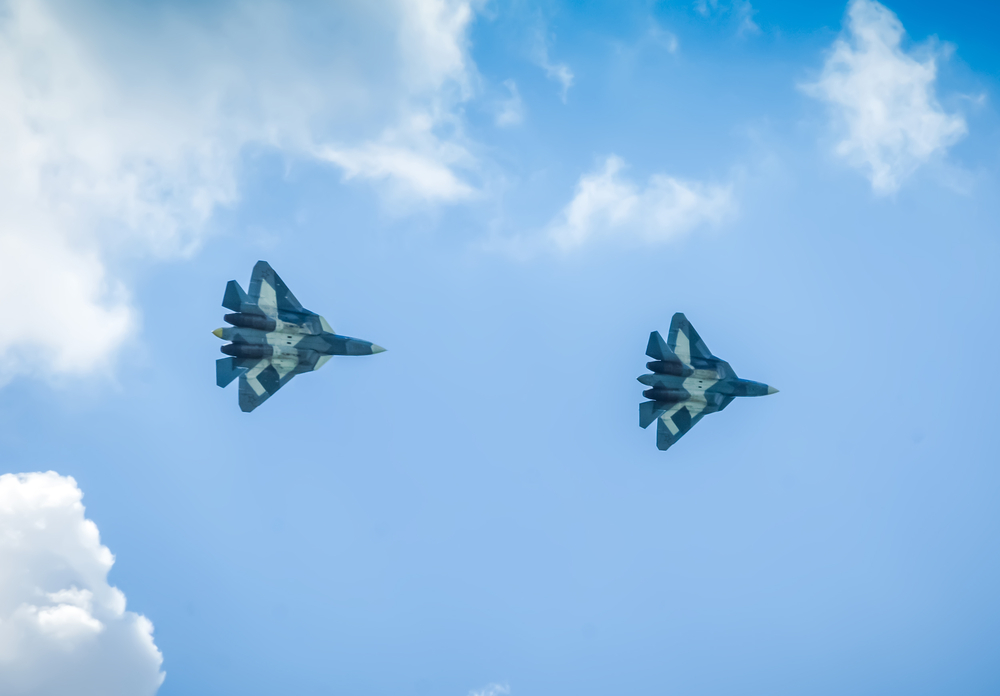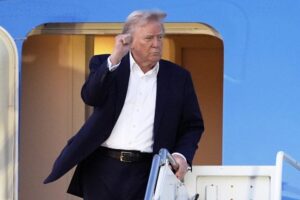
China said it would continue its military drills around Taiwan on Monday as it flew dozens of airplanes toward the island in retaliation against the Taiwanese president’s US visit.
The Chinese military began a three-day “combat readiness patrol” around the self-governed island on Saturday, a day after Taiwanese president Tsai Ing-wen returned from her Central and North America visit.
Ms Tsai, during a stopover in the US, held talks with House speaker Kevin McCarthy in California.
Washington is one of the key allies of Taiwan in the West. A US congressional delegation also met with Ms Tsai over the weekend in Taiwan after she returned.
China has beefed up its military activities around the island in recent years, arguing that Taipei is obliged to reunite with Beijing, by force if necessary, and has no right to conduct foreign relations. Taiwan has been self-ruled since it split from the mainland in 1949 following a civil war.
The island said it detected a total of 70 planes between 6am Sunday and 6am Monday, with half of them crossing the Taiwan Strait. Among the planes that crossed the median were 8 J-16 fighter jets, 4 J-1 fighters, 8 Su-30 fighters and reconnaissance planes, the Taiwanese defence ministry said.
That followed a full day between Friday and Saturday, where eight warships and 71 planes were detected near Taiwan. The island said in a statement it was approaching the situation from the perspective of “not escalating conflict, and not causing disputes”.
Chinese state television on Monday said aircraft, including nuclear-capable H-6 bombers armed with live missiles, and warships staged drills to “form a multi-directional island-encompassing blockade situation”.
“In the Taiwan Strait, the northwest and southwest of Taiwan and the waters east of Taiwan (Chinese forces) took the initiative to attack, giving full play to their performance advantages, flexibly manoeuvring to seize favourable positions, and advancing at high speed to deter opponents,” the report said.
The Eastern Theatre Command of the People’s Liberation Army (PLA) said the aircraft carrier, Shandong, also took part in combat patrols, and showed fighters taking off from its deck.
Along with the combat readiness patrols, the Chinese military said it would hold “live fire training” in Luoyuan Bay in China’s Fujian province opposite Taiwan.
China also responded to the McCarthy meeting by imposing a travel ban and financial sanctions against those associated with Ms Tsai’s trip.
Washington said the US had “consistently urged restraint and no change to the status quo”, while the Pentagon said it too was “monitoring events closely”.
“There is no reason for Beijing to turn this transit – which was consistent with longstanding US practice and policy – into something it is not or use it as pretext to overreact,” a defence department spokesperson was quoted by AFP as saying.
Japan said the Shandong vessel conducted air operations in waters close to its Okinawa islands on Sunday.
Jet fighters and helicopters took off and landed on the carrier 120 times between Friday and Sunday, with the carrier, three other warships and a support vessel coming within 143 miles of Miyako island, the Japanese defence ministry said.
Tokyo said it has been following Beijing’s military drills around Taiwan “with great interest” as top officials from Japan and China met on Monday to discuss maritime concerns in the disputed waters.
“The importance of peace and stability in the Taiwan Strait is not only important for the security of Japan, but also for the stability of the international community as a whole,” Japan’s chief cabinet secretary Hirokazu Matsuno told reporters.
China’s military moves have been a concern for Tokyo, especially after Chinese missiles landed within Japan’s exclusive economic zone last August when Beijing staged war games to protest then-US House speaker Nancy Pelosi’s visit to Taipei.
Meanwhile, the US Navy its guided-missile destroyer – USS Milius – conducted a navigational rights and freedoms mission in the disputed waters of the South China Sea near the Spratly Islands on Monday.
“At the conclusion of the operation, USS Milius exited the excessive claim area and continued operations in the South China Sea,” a US Navy statement said. “This freedom of navigation operation upheld the rights, freedoms and lawful uses of the sea.”
Beijing and Washington sparred over the movement of the USS Milius last month, which China said entered its territorial waters near the Paracel Islands.
While Washington has no position regarding the sovereignty of the territory, it has said it would regard any attempt by China to capture the islands as an attack on its ally.
The Chinese military in a statement said the destroyer’s movements were followed and monitored by Beijing.






